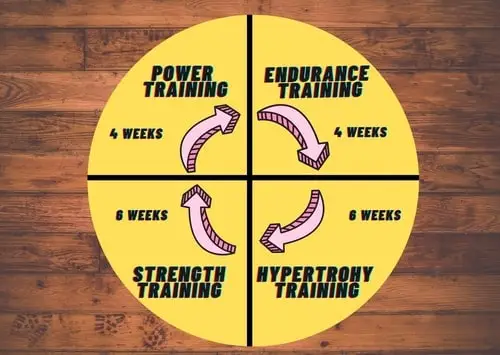Fitpro Income
Keep Your Personal Training Clients Motivated: 9 Proven Ways
No matter how much your clients enjoy their sessions with you, no matter how funny you are and no matter how good you make them feel, if your client loses motivation, you will lose them.
Everyone starts off enthusiastic about beginning personal training sessions, but what few people don’t realise is that they will not get the body of their dreams in the first few weeks of training, or simply because they have hired a trainer.
The last thing you want is for your client to lose motivation for training, or it will be seriously tough to convince them to sign up for another training package with you.
Personal trainer motivation is a massive factor for many clients and can be the difference between success and failure.
In this article, I will be explaining various tips and tricks that will teach you how to motivate personal training clients, which helped me keep them training with me for sometimes years at a time.
Sound good?
Let’s go……

Unfortunately, it won’t matter how many times you yell “Come on, you can do it!” at your clients, if you aren’t keeping them fully motivated in their training you will lose them for good.
They will start getting bored and wondering if paying for more training is really worth it.
It’s vitally important that you learn how to keep your clients motivated at all times, especially through plateaus and other sticking points.
In fact,
Your entire career depends on it!
So let’s jump into some of the best personal trainer motivation techniques you can use to keep your clients training for years, but more importantly, making fantastic progress and getting the results they’re after.
1. Show them progress
First on the list, and rightly so.
Your client has signed up with you so that they make progress towards their fitness goals, that’s the whole point of the sessions. If you can’t show them that they are getting stronger, leaner or they have lost more weight than last month, why should they carry on with you, and where would their motivation come from?
So how do you show your clients that they have made progress?
- Weight loss (no matter how small)
- Weight gain if that is their goal (no matter how small)
- Increase in muscular endurance by increased reps achieved
- Increased muscular definition
- Increased strength (even if it’s only by .5 of a kilo
In order to be able to show your client that they are making progress, you must write down measurements, weights, reps, sets and anything else you can look back at in a few weeks time.
If you are not constantly pushing your client, it may make for easy sessions for yourself and your client, but when they start wanting to see results from the money they have invested, you are going to look like a pretty terrible trainer.
2. Use periodised training methods
You might have been told whilst you were getting your qualifications, that you should change up your client’s workouts every few weeks.
This is a good idea, but there is a way that you can improve on just changing peoples workouts for the sake of it.
By using periodised training methods, you can not only keep your clients engaged in their workouts as they will have something to look forward to every six weeks, but they will also make fantastic progress.
You are hitting two birds with one stone, which is a shame for the birds, but great news for you.
So what is perodised training?
Periodised training refers to using one style of training for up to six weeks at a time, then moving to another and repeating this in a cyclical fashion.
The idea is that the previous style of training complements the current style. For example, with a new client, you may start with five to six weeks of endurance and core stability training, then six weeks of hypertrophy training, moving on to six weeks of strength training.
You would then move back round to the second round of hypertrophy training, by which time the client should be able to lift more than the first cycle due to the six weeks of strength training.
Here is a visualisation of a periodised training cycle.

3. Take measurements (but not too often)
When a new client signs up for sessions with you, one of the very first things you should do is take measurements and gain as many statistics about them at their starting point as possible.
If you don’t do this and they are looking to lose weight, for example, you have to rely solely on them taking their own weight and doing it accurately.
They will probably end up weighing themselves at different times of the day, sometimes before and sometimes after a meal, which will give them very mixed results.
If they are looking to lose weight and after three weeks they aren’t seeing those numbers go down, do you honestly expect them to stay motivated?
Instead, take the initiative (as a trainer should), and get the following stats as soon as possible.
- Bodyweight
- Tape measurements (waist, arms, thighs, etc)
- Bodyfat percentage (calipers)
- Postural assessment (lordosis, kyphosis, or scoliosis)
- Endurance (push up testing)
There are of course plenty of other tests you can perform, but as long as you have got a good base of statistics, you will be able to look back on them in a few weeks and after re-testing, should be able to see improvements to at least several of the tests.
Nothing motivates clients quite like seeing the numbers going up or down in the right direction.
A word of warning:
Do not test too often!
Testing your clients weekly is far too frequent, and they are unlikely to show any noticeable improvements in such a short period of time.
This could have the opposite effect intended and could de-motivate your client.
I would recommend you test your client no more than once every four to six weeks.
4. Break your clients’ goals down
Chances are, most people that will go to a trainer will have already tried reaching their goals at least once, and maybe even several times before they give in and hire somebody to help them out.
That’d be you!
These people may have some pretty lofty ambitions, such as wanting to lose three dress sizes in two months because they are going to a wedding or someone who wants to get ripped in five weeks because they are going on a beach holiday.
You need to explain to these people, that in order to make their goals attainable, they need to be broken down into smaller chunks so the progress made can be measured and re-assessed.
This will prevent your client from having unrealistic expectations of what can be achieved in a short period of time, and will also have them constantly celebrating small victories.
Being able to constantly show your client that they have beaten yet another personal best is a huge motivational factor.
5. Use your personality

What’s one of the easiest ways to motivate your client?
By being a motivated trainer!
If you as a trainer show that you fully believe your client can reach their goals and that they are constantly making excellent progress (especially on the days where the client feels like they are taking steps backwards), you will increase their self-belief, which will, in turn, motivate them.
Remember, your role as a personal trainer is not only to design programmes and count reps, you are a lot more than that. You are literally being hired to motivate and encourage people throughout their training.
Don’t be one of those trainers that stand around looking at their watch during rest periods or watching other peoples sessions.
Give your clients your undivided attention and focus at all times. It only takes one session where the client is lacking in self-belief and for you to be standing around not paying attention for them to decide that training “isn’t for them”, so they give up.
Be engaging, be encouraging, be understanding, be patient and keep high energy levels. Your own high energy will motivate your client to keep going and never give up.
6. Don’t forget about your clients
I know, as a trainer you have a lot on your plate at all times.
You have all your sessions to organise, you need to make sure the rent is being paid, you need to make sure everyone’s booked into sessions that aren’t clashing and of course, there is the matter of filing your own tax etc.
You are busy, really busy and it’s very easy to forget about your clients after the sessions are finished.
Unfortunately, gym rents being so high means that you will need to be pumping out session after session because you are seeing so many people each day, it’s very easy to forget one of the most important factors to your job as a personal trainer.
It’s personal!
Your clients are paying for you to look after them and care about the progress they make. If they start to feel like they are just another session to you and more money in your pocket, they can easily begin to become de-motivated.
Show your client that you are always available to talk outside of sessions to give advice or discuss anything that is bothering them about their routines.
As a trainer, you are giving a 1-2-1 service to people. This is what they are paying for and what they should be receiving at all times.
Not everything is always about money, but remember that hiring you will not be cheap for most people. They have taken a big decision to train with you that may have required them to make certain sacrifices like not seeing friends as often, not eating out or cutting down on going out in the evenings.
As soon as your clients being to feel like nothing more but a session to sign off and get paid for, the sacrifices they have made to pay for your training will start to look more and more tempting to go back to.
Give them your full attention, be available and help them in every way you can. Give them the best service you possibly can, whether a client is paying you £50 an hour or £50 for a programme once a month. A client is a client and they deserve a great service
7. Workout with your clients

I assume seeing as you decided to begin a career in fitness that you absolutely love exercise and keeping fit?
Well, I’m sad to say, you are in the minority of people with this mindset.
A lot of people see exercise as boring, stressful, painful, time-consuming, expensive and for some who are self-conscious, anxiety-inducing.
A great way of helping people that really don’t want to be in a gym at all is to work out with them.
This way, they feel like they not only have a personal trainer, they have a workout buddy too. In fact, some people may prefer this anyway, as they might feel embarrassed to have asked for the help of a trainer.
If they are working out with someone, it looks more like they are training with a friend, which they may be more comfortable with.
I was not a fan of running at all, in fact, I absolutely hated it.
I even felt guilty asking my clients to go for jogs between workouts if they were looking to lose weight because I knew how upset I would have been if someone asked me to do the same.
The great change came when I was asked if I wanted to go for a run with three other pt’s along the south bank of the Thames during a warm day in May.
I had the best time running with my colleagues, and it really made me enjoy running. I have actually just organised to go for a run with my friend tomorrow whilst writing this article.
The reason for this story is that it shows how your mindset can be changed by something as simple as having someone else be able to encourage you during an activity whilst they are doing it too.
Having a trainer shout “come on, two more reps” is one thing, but if you are lifting together and they can see you are straining as much as they are, then you become a workout partner and not just a trainer.
Workout with your clients when you can see this would be beneficial to them, just remember to have a shower before the next session.
8. Explain why they may not see progress each week
Progress is very rarely linear in any field, and exercise is no exception.
Despite this being common knowledge to most, it is often forgotten by people, especially people who are paying for results by hiring a trainer.
There may be weeks where the client feels like they are making constant progress, weight dropping off the scales, dresses feeling looser or the opposite for people looking to gain size.
Then it happens!
The first week where the weights don’t go up, the numbers on the scales don’t go down, the sprinting session feels harder than usual. This signals something must be wrong to the client.
The programmes must be wrong, the diet must be no good or maybe the trainer doesn’t know what they are talking about?
Doubt will come into the mind of a client very quickly when they are paying a lot of money for results, so it’s very important that you sit down and explain that progress in the gym takes place neither in a linear fashion, nor a predictable one, but, it will happen.
You need to set your clients expectations to be realistic, attainable, and explain that there will be points where training will feel difficult and as if progress is not coming, but that this is perfectly normal and something that anyone training will go through.
A little chat like this with your client at the beginning of their training will save you on a lot of disappointed clients and people leaving your services prematurely. It’s a conversation well worth having with them.
9. Dive a little deeper into your clients’ psychology
When asking people about their training goals, you will hear all the usual’s, people looking to lose weight and tone up, people wanting to add on more muscle or just get a bit more shape and definition.
It’s one thing to ask what it is that someone wants to achieve, but it’s quite another to understand why they want to achieve it.
What difference would it make to their life if they attained this goal? They may feel healthier, but why is this important to them?
Ask them why they want to achieve the goal they have set for themselves and what impact the change would make on their life.
This knowledge is incredibly powerful, as you are getting to the root of the persons pain (called the pain point). This is useful during the sales process, but it is a great motivator once they have purchased from you too.
For example, if a client is having a particularly bad day, (maybe they have had little sleep or have had a bad day at work), what better way to motivate them than to remind them of how the exercise they are doing now will improve or even remove the pain points they discussed with you?
Remember, “knowledge is power“.
Conclusion
Motivating your client is one of the main ways to increase your client retention. It benefits you and your clients in a bunch of ways.
It benefits your clients by helping them to achieve the goals that they hired you to help with, but it helps you by keeping them longer as clients which means more money for you.
Your client is likely to spread the word about how encouraging you are as a trainer and what great results you helped them get.
You can’t really get a better advertisement than someone singing your praises to all their friends and colleagues.
It’s really only a small effort on your behalf, but it makes such a massive difference to your clients’ motivation.
This article will have explained just how to motivate your client as a personal trainer, but also how important client motivation is to your business, and also how easily it can be increased and maintained.
Keep them happy, keep them progressing and they will keep training with you.
Go get ’em!
